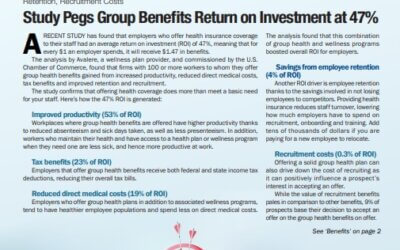As you may have seen the Senate voted on the Coronavirus Aid, Relief, and Economic Security Act (CARE Act) last night.
You can find all of the legislation here, and based upon my initial review I’ve outlined some key areas that you may find useful.
As anticipated, the Federal Government is really making a push for employers to retain employees on payroll as much as possible with the goal being to flip the switch as soon as this is over. In an effort to make this happen the government is making loans (up to $10,000,000 based upon employer payroll) available to businesses to use to cover the following items:
Page 20:PayrollContinue Health InsuranceFMLASick Leave Commissions or similar paymentsInterestRentUtilities
It is anticipated that starting as early as next week loans will be available through many banks and credit unions, and funds will be available almost immediately.
Purpose of the loans:
Page 23, section two
“funds will be used to retain workers and maintain payroll or make mortgage payments, lease payments, and utility payments”
Criteria for loan approval:
Recipient can’t take duplicative loans
Won’t look at credit and won’t require a personal guarantee
Interest rate not more than 4%
Payment deferment relief for not less than 6 months and not more than one year
Loan forgiveness page 41
It appears that the the entire balance of the loan will be forgiven if employers meet certain criteria related to employee retention.
Page 45 – reduction in forgiveness based on reduction in number of employees.
Loan will also be reduced by the amount of any reduction in total salary or wages of any employee that is in excess of 25 percent.
There is a 30 day window where a reduction in employees is not held against you so long as they are rehired.
Title II – page 84
Unemployment:
In a fix to the FFCRA, section jj of the unemployment benefit portion of the bill (on page 87) states that an employee is eligible if:
“The individuals place of employment is closed as a direct result of the COVID 19 public health emergency”
It appears that the following section is also intended to be a catch-all to make sure the benefits go to as many people as possible:
“The individual meet any additional criteria established by the secretary for unemployment assistance under the section.”
It is also key that the benefits, unlike the FFCRA, are retroactive to 1/27/20:
“Inability to work caused by COVID-19 beginning 1/27/20 and ending 12/31/20”
and
“available for dates before enactment back to 1/27/20”
Benefit Duration:
Page 90
The benefit shall not exceed 39 weeks
How much is the benefit?
Page 99
A amount under state law
An additional amount of $600 in Federal Pandemic Unemployment compensation
Page 144
Recovery rebates for individuals
$1,200 payment for singles
$2,400 filing jointly
$500 per child
Starts being reduced for families filing jointly over $150k in income
$112,500 head of household
$75,000 single
Special rules for use of retirement funds without penalties on page 158
The withdrawal can’t exceed $100,000
Student loan payments:
This is potentially a big deal for employees and employers as currently any payments made towards student loans made by employers on behalf of their employees are taxable to the employees. It appears on page 176 that payments made to employee student loans before 1/1/21 are not taxable to the employees.
Finally, another key section for most employers that we are not qualified to weigh in on and that you’ll want to review with you tax professional is:
Subtitle C – Business provisions
Page 178 Employee Retention Credit
Delay of payment of employer payroll taxes Page 189
It is anticipated that the House will move quickly on this legislation and hopefully pass it today, and the President will sign it shortly after that. There is a lot to digest and as we learn more we will continue to fill you in.
As always, please don’t hesitate to reach out with any questions, we are here to help in any way we can.

